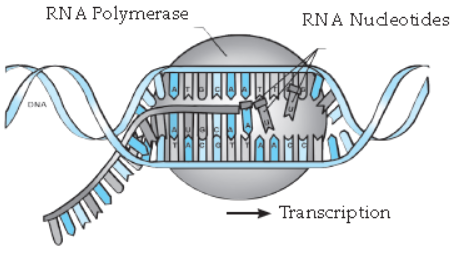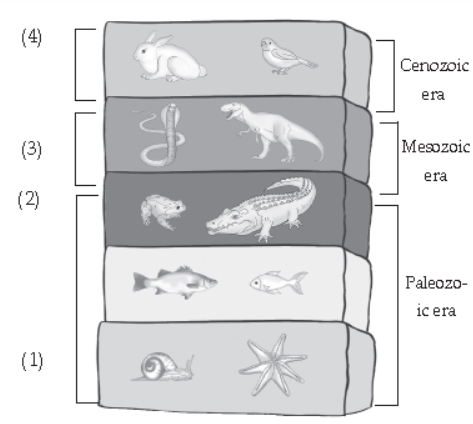HREDITY AND EVOLUTION TEST ANSWERS This will help you to prepare for your board exam.
Q1. A Rewrite the statement by using correct option.
- ……. proposed a model for protein synthesis with the help of DNA in bacterial cells.
- Johann Gregor Mendel
- Walter and Sutton
- Francois Jacob and Jack Monad
- Hugo de Vries
- Information about protein synthesis is stored in the …….
- mitochondria
- DNA
- RNA
- (d) ribosomes
- …….. brings in the coded message from the DNA.
- mRNA
- tRNA
- rRNA
- Ribosomes
- As per the message on mRNA, amino acids are supplied by tRNA. This is called as ……………….
- Transcription
- Translation
- Translocation
- Transportation
- ……. is a gradual change occurring in living organisms over a long duration.
- Evolution
- Mutation
- Variation
- Heredity
Q 1. B Answer the following
- State whether the following statements true or False. Correct the false statements.-
Complex proteins control various functions in the body of living organisms and their appearance too.
True.
- Name the following – First record of human like animal in the form of ape from East Africa.
Ramapithecus
- Complete the analogy: Similarities in characters: Morphological evidence :: Similarities in structure of bones and joints : …………………..
Anatomical evidence
- Find the odd one out:
Transcription, translation, translocation, transpiration
Transpiration – Others are processes of complex protein synthesis
- Fill in the blanks and rewrite the statements:
….. is pioneer of the modern genetics
Johann Gregor Mendel
HREDITY AND EVOLUTION TEST ANSWERS
Q 2. A Give scientific reasons (Any 2)
- Geographical and reproductive isolation of organisms gradually leads to speciation
HREDITY AND EVOLUTION TEST ANSWERS
- Speciation is the formation of new species due to evolution.
- Each species has different food, habitat, reproductive ability and period.
- Speciation can occur either through geographical isolation or reproductive isolation
- Geographical isolation occurs when species are separated due to geographical barriers like river, ocean, etc. It exposes organisms to different geographical conditions and speciation occurs.
- Reproductive isolation is change in genetic material and structure of genital organs
- Though the ancestors are same, but due to seperation for long time, there is genetic variation which leads to speciation.
- Study of fossils is an important aspect of study of evolution.
- Large number of organisms got buried due to disasters like flood, earthquake, volcano, etc.
- Remnants and impressions of such organisms remain preserved underground. These are called as fossils.
- With help of carbon-dating technique, it is easy to determine the age of fossils.
- Once the age of fossil has been determined, it becomes easy to deduce information about other erstwhile organisms.
- Hence, study of fossils is an important aspect of study of evolution.
- There is evidences of fatal science among chordates
- It is believed that chordates have originated from invertebrates.
- Comparative study of development in different sexually reproducing organism like fish, amphibians, and mammals shows that there are extreme similarities during initial stages and those similarities decrease gradually.
- This indicates that, all these have evolved from a common ancestor
Q 2. B Answer the following (Any 3)
- Draw neat and labelled diagrams of: Transcription

- Why did the huge animals like dinosaur become extinct
Following events could have played an important role in this process –
- Gas seeping and ash evolving from volcanoes suffocated most of the dinosaurs.
- The entire population of dinosaur may have been wiped out due to diseases.
- The dinosaurs could not survive after a big meteorite crashed into earth, drastically changing the climatic conditions.
- Imbalances in food chain leads to starvation of the dinosaurs.
- Write a note on – Embryology
- Embryology is the science which deals with the study of development of an organism from an embryo.
- Comparative study of embryonic developmental stages of various vertebrates shows that all embryos have extreme similarities during initial stages.
- Those similarities decrease gradually.
- Similarities in initial stages indicate the common origin for all these animals.
- Write a note on – Speciation
- Formation of new species of plants and animals through the effect of evolution is called as
- Species is the group of organisms that can produce fertile individuals through natural reproduction.
- Each species grow in specific geographical conditions. Their food, habitat, reproductive ability and period is different.
- Genetic variations are responsible for formation of new species from earlier one.
- Besides, geographical and reproductive changes are also responsible.
HREDITY AND EVOLUTION TEST ANSWERS
- Define – heredity, evolution.
Heredity
Heredity is the transfer of biological characters from one generation to another via genes.
Evolution
Formation of new species due to changes in specific characters of several generations of living organisms as response to natural selection is called evolution.
Q 3. Answer the following (Any 5)
-
Explain Lamarckism
- This theory was proposed by Jean Baptiste Lamarck.
- It is also called as Theory on inheritance of acquired characters.
- It is based on the concept of Use and disuse of organs.
- It says that, morphological changes occurring in living organisms are responsible for evolution. Morphological characters develop because of specific activities of an organism.
- Morphological changes take place due to activities or laziness of a particular organism.
- All organisms can transfer aquired characters to next generation. This is called Ancestry of acquired characters
Examples:
- Long neck of giraffe is due to browsing on leaves of tall plants.
- Wings of Ostrich became weak due to no use.
- Snakes lost limbs due to burrowing habit.
- Shoulders of ironsmith become strong due to frequent hammering.
- Legs of ducks have modified for swimming.
Objections:
Modifications are not always transferred to next generation
-
Write a note on – Evolution
HREDITY AND EVOLUTION TEST ANSWERS
- Evolution can be defined as gradual changes occurring in organisms over a long duration of time.
- It is a slow-going process.
- Formation of new species occur due to changes in specific characters.
- It takes millions of years for development of new species.
- Changes get accumulated in several generations due to natural selection and new species are formed
-
Observe the figure and answer the questions given below:

a. Label parts 1 to 4
1 – Invertebrates, 2 – Pisces, Amphibia, Reptiles, 3 – Reptiles, 4 – Mammals, Aves
b. What is the evidence of evolution shown in the picture?
Paleontological evidence is shown in the picture by the study of fossil found in the layers of the ground.
c. What is Carbon dating
Carbon dating is a method used in determining the age of fossils and manuscripts passed since the death of a plant or animal can be calculated by measuring the radioactivity of C-14 and the ratio of C – 14 and C – 12 present in their body.
-
Complete the table
| Evidence | Example |
| Embryological | ……. |
| Vestigial organ | …… |
| Paleontological | …….. |
| Evidence | Example |
| Embryological | Embryos of various vertebrates like man, rabbit, fish, etc. |
| Vestigial organ | Wisdom teeth, Appendix |
| Paleontological | Fossils of various organisms |
HREDITY AND EVOLUTION TEST ANSWERS
-
Distinguish between transcription and translation

-
Explain with the help of a flow chart the theory of Evolution.

7. Observe the picture and answer the questions

a. The picture depicts a theory of use or disuse of organs. Name it.
The name of the theory is Lamarckism.
b. Name the scientist who proposed it.
Jean – Baptiste Lamarck proposed this theory.
c. Give one example and explain the theory with its help.
Lamarck said that the morphological changes occur gradually either due to specific activities or laziness of a particular organism Ex. Giraffe’s neck is long due to browning on leaves of tall plants by extending its neck
-
Observe the diagram and identify each organism.
Explain their role in proving the process of evolution.

Their role in proving the process of evolution.
- Duckbill platypus lays eggs like reptiles and has hair and mammals glands like mammals and therefore it is a link between reptiles and mammals.
- Lungfish is a fish but breathes with lungs therefore it is a link between amphibians and pisces.
- Peripatus is a connecting link between Phylum Annelida and Arthropoda with segmented body, parapodia-like appendages and thin cuticle (Annelida) and breathes through trachea with open circulatory system (Arthropoda).
Q 4. Answer the following (Any 1)
-
Write the evolutionary history of modern man.
- It began approximately 7 crore years ago.
- The last dinosaurs disappeared 7 crore years ago.
- Ancestors of humans developed from animals which resembled modern lemur like animals.
- After about 4 crore years ago, in Africa, the tails of these monkey-like animals disappeared gradually.
- From these, developed ape–like animals (Aegyptopithecus) due to enlargement of brain and improvement in hand functioning.
- Some of the Aegyptopithecus migrated to South and North East Asia from which apes like Gibbons and Orangutan developed.
- While some stayed in Africa which developed into Gorilla and Chimpanzees around 2.5 crore years ago.
- From these, developed Dryopithecus.
- 2 crore years ago, human like animals who used hands for eating and other work were evolved.
- Due to reduction in forests, the apes started living on land.
- Due to this, there were changes in the structure of their vertebral column and lumbar bones.
- Thus, they were able to stand in an erect posture and their hands became free for use.
- The first record of human like ape in East Africa was Ramapithecus (About 1 crore years ago)
- Around 40 lakh years ago, these apes grew in size and became more intelligent (Australopithecus)
- Around 20 lakh years ago, human like animals shared morphological similarities with the members of genus homo, and skilled human developed.
- Around 15 lakh years ago, human walking with erect posture evolved that may have existed in China, Indonesia and Asian subcontinent.
- Neanderthal man who was considered as the first wise man, was evolved around 1.5 lakh years ago.
- For around 1 lakh years from then, cranial capacity of man increased.
- Man also discovered fire.
- The brain of 50000-year-old man evolved in such a way that, he could be considered as the member of wise man (Homo sapiens)
- Cro magnon man evolved around 50000 years ago.
- Now the evolution became faster.
- 10,000 years ago, Man started practicing agriculture, cattle rearing, establishing cities.
- Then cultural development started
- 500 years ago, Art of drawing developed
- 400 Years ago, Modern Science developed
- 200 years ago, Industrial society was established.
-
Sketch and explain the structure of DNA and various types of RNA
HREDITY AND EVOLUTION TEST ANSWERS
- Scientists Watson and Crick proposed a model of the DNA molecule.
- According to this model, the two threads (strands) of nucleotides coil around each other to form a double helix.
- This double helical structure appears like a flexible ladder.
- Each strand is made up of molecules known as nucleotides.
- A molecule of a nitrogenous base and phosphoric acid are joined to a molecule of sugar to form a nucleotide.
- There are four types of nitrogenous bases in the form of adenine and guanine (purines), thymine and cytosine (pyrimidine). Thus, four types of nucleotides are formed.
- The nitrogenous bases from the two strands are joined by hydrogen bonds to form base pairs (rungs of ladder). Two threads form a long chain of alternately joined molecules of sugar and phosphoric acid (rails of the ladder).
- The adenine always pairs with thymine and guanine always pairs with cytosine in a DNA molecule.

In the structure of RNA, there are also nitrogenous bases present like – adenine and guanine (purines), uracil and cytosine (pyrimidine).
There are three types of RNA –
- Ribosomal RNA (rRNA): The molecule of RNA which is a component of the ribosome organelle is called a ribosomal RNA. Ribosomes perform the function of protein synthesis.
- Messenger RNA (mRNA): The RNA molecule that carries the information of protein synthesis from genes i.e. DNA chain in the cell nucleus to ribosomes in the cytoplasm which produce the proteins, is called messenger RNA.
- Transfer RNA (tRNA) : The RNA molecule which, according to the message of the mRNA carries the amino acid up to the ribosomes is called transfer RNA.

